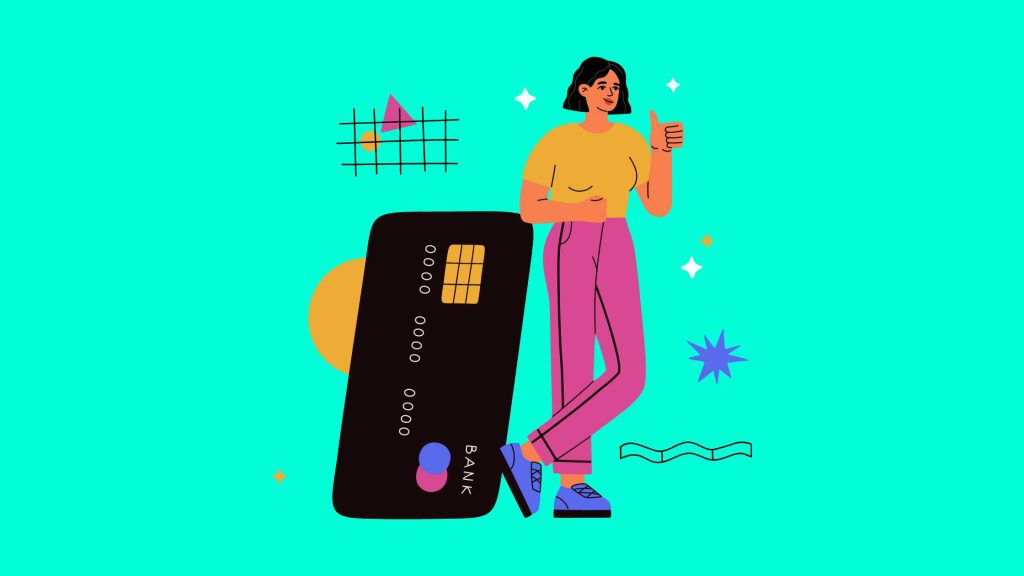Credit Score Drop : Are These Reasons Causing Your Credit Score to Drop? Discover the Solutions – 2024
Credit Score Drop : In today’s fast-paced world, credit cards have become an essential financial tool for many people. Whether it’s to avoid financial emergencies, take advantage of cash-back rewards, or simply make everyday purchases more convenient, credit card usage has increased significantly over the years. However, alongside these benefits come certain responsibilities, and one of the most important aspects of credit card usage is managing your credit score effectively.
Table of Contents
Your credit score is a key factor in your financial health and plays a significant role in determining your eligibility for future loans and credit. But with credit cards come the potential pitfalls that can negatively impact your credit score. Understanding what a credit score is, how it is affected, and how to manage it is crucial for anyone using credit cards or considering taking out loans. In this essay, we will explore the concept of a credit score, identify the factors that can cause your score to drop, and provide practical solutions for maintaining a healthy credit score.
What is a Credit Score?

Before diving into the reasons why your credit score might drop, it’s important to first understand what a credit score is and why it matters. A credit score is a three-digit number that represents your creditworthiness. It reflects how likely you are to repay borrowed money based on your past credit behavior. Credit scores typically range from 300 to 850, with higher scores indicating a greater likelihood of repaying debts. Lenders use this score to assess the risk involved in lending money to you. A high credit score can give you access to better loan terms, lower interest rates, and higher credit limits.
Credit scores are calculated based on several factors, including your payment history, the amount of debt you owe, the length of your credit history, new credit inquiries, and your credit mix (such as loans, credit cards, and mortgages). Among these factors, credit utilization, or how much of your available credit you are using, plays a significant role. Maintaining a low credit utilization ratio is essential for achieving a good credit score.
Common Causes of a Credit Score Drop
There are several reasons why your credit score might drop. It’s important to recognize these factors so that you can avoid making financial mistakes that could damage your creditworthiness. Below are some of the most common causes of a credit score decline:
- High Credit Utilization Ratio: One of the biggest factors that can cause your credit score to drop is having a high credit utilization ratio. The credit utilization ratio is the percentage of your total available credit that you are currently using. For example, if your credit card has a limit of $10,000 and your balance is $4,000, your credit utilization ratio is 40%. Credit scoring models, such as FICO and VantageScore, view a high utilization ratio as a sign that you may be overly reliant on credit, which can make you a higher risk to lenders. Ideally, you should aim to keep your credit utilization ratio below 30% of your available credit limit. Exceeding this threshold can cause your credit score to drop significantly.
- Late or Missed Payments: Payment history accounts for a significant portion of your credit score—typically around 35%. Late or missed payments on credit cards, loans, or other forms of debt can have a devastating impact on your credit score. Even a single missed payment can cause your score to plummet, especially if you have a previously strong credit history. Lenders want to see that you are able to make timely payments, and failing to do so raises red flags about your ability to manage your finances.
- Applying for Multiple Credit Accounts in a Short Period: Each time you apply for a new credit card or loan, the lender will perform a hard inquiry on your credit report. While a single inquiry may have a minimal effect on your credit score, applying for multiple credit accounts within a short time frame can signal to lenders that you are desperate for credit. This can cause your credit score to drop temporarily. Hard inquiries typically remain on your credit report for about two years, but their impact on your score lessens over time.
- Closing Old Credit Accounts: While it may seem like a good idea to close old, unused credit accounts to simplify your financial life, doing so can actually hurt your credit score. Closing a credit account reduces your total available credit, which can increase your credit utilization ratio if you have balances on other accounts. Additionally, the length of your credit history is another factor that affects your credit score. By closing an old account, you shorten the average age of your credit accounts, which can negatively impact your score.
- Having a Limited Credit Mix: A diversified credit mix—meaning a combination of credit card accounts, installment loans, mortgages, and other types of credit—can positively influence your credit score. If your credit portfolio is limited to just one type of credit, such as only credit cards, your score may not be as high as it could be. Lenders like to see that you can manage different types of credit responsibly.
- Defaulting on a Loan or Filing for Bankruptcy: Defaulting on any type of loan or filing for bankruptcy is one of the most serious actions that can severely damage your credit score. A default occurs when you fail to meet the legal obligations of a loan agreement, typically by not making payments for an extended period. Bankruptcy, on the other hand, is a legal process that allows individuals to discharge their debts, but it stays on your credit report for seven to ten years, depending on the type of bankruptcy filed. Both defaults and bankruptcies indicate to lenders that you are a high-risk borrower.
The Importance of Credit Utilization Ratio

One of the most critical factors in maintaining a healthy credit score is managing your credit utilization ratio. The credit utilization ratio is the percentage of your available credit that you are using at any given time. For example, if you have a total credit limit of $10,000 and you are using $3,000, your credit utilization ratio is 30%. This ratio is important because it shows lenders how much of your available credit you rely on. A lower credit utilization ratio indicates that you are managing your credit well and are not overly reliant on borrowing.
Buy Now : Ecommerce Website With 100 Products
Most financial experts recommend keeping your credit utilization ratio below 30% to maintain a good credit score. For example, if your credit limit is $10,000, you should aim to keep your balance under $3,000. Using too much of your available credit can negatively impact your credit score because it signals to lenders that you may be struggling to manage your debt. On the other hand, a low credit utilization ratio demonstrates financial responsibility and makes you more attractive to potential lenders.
How Credit Utilization Ratio Affects Your Credit Score
The credit utilization ratio plays a significant role in determining your overall credit score. Here’s how it affects your financial health:
- Creditworthiness: A low credit utilization ratio indicates to lenders that you are responsible with credit and are not overly dependent on borrowing. This makes you appear less risky, which can lead to better loan terms and lower interest rates. In contrast, a high credit utilization ratio suggests that you may be overextending yourself financially, making lenders hesitant to approve new loans or offer favorable terms.
- Interest Rates and Loan Terms: Your credit utilization ratio directly affects the interest rates and loan terms you receive. If your credit utilization is low, lenders are more likely to offer you lower interest rates on loans and credit cards. This is because a low ratio shows that you are managing your credit responsibly and are less likely to default on future payments.
- Potential for Credit Limit Increases: If you have a low credit utilization ratio, you are more likely to be approved for credit limit increases. Lenders are more willing to extend additional credit to borrowers who demonstrate good financial management. A higher credit limit can, in turn, help lower your credit utilization ratio even further, as you will have more available credit compared to the amount you are using.
- Impact on Future Loan Applications: A low credit utilization ratio is a positive indicator for future loan applications. Lenders are more likely to approve your loan applications if they see that you are not heavily reliant on borrowed funds. Conversely, a high credit utilization ratio can hurt your chances of being approved for new credit, as it suggests that you are already stretched thin financially.
Practical Solutions for Managing Your Credit Utilization Ratio

Maintaining a low credit utilization ratio is crucial for achieving and maintaining a good credit score. Below are some practical strategies to help you manage your credit utilization effectively:
- Keep Credit Card Balances Low: One of the simplest ways to manage your credit utilization ratio is to keep your credit card balances low. Aim to use less than 30% of your available credit limit on each card. For example, if your credit limit is $5,000, try to keep your balance below $1,500. By doing this, you can maintain a favorable credit utilization ratio and protect your credit score.
- Make Payments More Frequently: Instead of waiting for your monthly statement to arrive, consider making multiple payments throughout the month. This helps keep your balance low and reduces your credit utilization ratio. By making more frequent payments, you can ensure that your credit card issuer reports a lower balance to the credit bureaus, which can positively affect your score.
- Request a Credit Limit Increase: Another way to lower your credit utilization ratio is to request a credit limit increase from your card issuer. For example, if your current credit limit is $5,000 and you regularly carry a balance of $2,000, your utilization ratio is 40%. However, if your credit limit is increased to $10,000, that same $2,000 balance would result in a much lower utilization ratio of 20%. Just be sure to avoid increasing your spending in response to the higher limit.
- Pay Off Debt Strategically: If you have multiple credit cards with balances, focus on paying off those with the highest utilization ratios first. This can help lower your overall credit utilization and improve your credit score more quickly. Additionally, paying down high-interest debt first can save you money in the long run.
- Avoid Closing Old Credit Accounts: While it might seem tempting to close old credit accounts that you no longer use, doing so can actually increase your credit utilization ratio and hurt your score. By keeping old accounts open, you preserve your total available credit, which helps keep your utilization ratio low. If you’re concerned about the temptation to spend on old accounts, simply stop using the card without closing the account.
- Monitor Your Credit Report Regularly: Regularly checking your credit report can help you spot any errors or discrepancies that may be affecting your credit utilization ratio. For example, if a lender reports an incorrect credit limit or balance, it can artificially inflate your credit utilization and lower your score. By reviewing your credit report and addressing any inaccuracies, you can ensure that your credit utilization ratio is calculated correctly.
- Use Multiple Credit Cards: If you have multiple credit cards, spreading your purchases across different cards can help lower your utilization ratio on each individual card. For example, instead of charging $3,000 to a single card with a $5,000 limit, you could charge $1,000 each to three different cards with $5,000 limits. This would result in a lower utilization ratio for each card, which can help protect your credit score.
Credit Score Drop – Conclusion
Maintaining a healthy credit score is essential for achieving financial success, and one of the most important factors in maintaining a good score is managing your credit utilization ratio. By understanding how your credit utilization affects your score and implementing practical strategies to keep it low, you can improve your creditworthiness and access better loan terms, lower interest rates, and higher credit limits.
Also Read : Do you get cashback? If not then apply for these cards immediately – 8 Cash Back Credit Cards
However, it’s important to remember that credit utilization is just one factor in your overall credit score. Paying your bills on time, diversifying your credit mix, and avoiding unnecessary credit inquiries are equally important for maintaining a strong credit profile. By taking a holistic approach to managing your credit, you can ensure that your credit score remains healthy and that you are well-positioned to meet your financial goals. Whether you’re applying for a loan, seeking a credit limit increase, or simply looking to improve your financial health, managing your credit utilization ratio is a crucial step toward financial success.
Keywords : Credit Score Drop – Credit Score Drop 2024 – Credit Score Drop 2025



